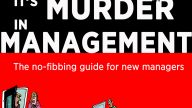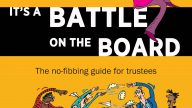Policy, Leadership, Fundraising
Running an Effective Board Awayday
Top tips for running a successful Board Awayday from Debra Allcock Tyler.
Most boards of trustees have an annual ‘awayday’ which in theory is a longer period of time for them to spend together to reflect and review the past and consider the future.
In my experience, many get them badly wrong.
Lots think that day is the day to think about strategic progress – when in reality strategic progress should be a much more common everyday agenda item – not a special one reserved for once a year.
Many use it as a chance to revisit ‘old wounds’; rewrite previously agreed strategies because they think that’s what they’re supposed to do; revisit stuff that doesn’t need revisiting; raise an old hobby horse which they cannot let go of.
Too often they resemble ordinary board meetings – only dragged out longer with something a bit extra lobbed in.
To be honest, I think too much time in all board meetings is wasted going over the past – when really what you should be thinking about is the environment in which you’re operating – what it’s like now; what it might be like and what you can do to prepare for the future. Use this precious time when you are all together to do things that you wouldn’t ordinarily have the time to do.
I think it’s also fair to say that boards can often be less than robust in properly reflecting on how good they are both as a board and as individual trustees. So away days are a really good opportunity to look at that. Our free governance app, which guides you in this reflection, is a great tool for this sort of work on an awayday.
Then we don’t think properly about the use of time. It’s so rare that boards can get together for a decent period of time we mustn’t waste it.
So let’s say you have a day together – starting at 0930, finishing at 16.30 with two 15-minute breaks and an hour for lunch. What in effect that means is you only have about 5 ¼ hours in total to discuss whatever you want to discuss.
It is so worth really thinking through how can you use that time most effectively? What things would most usefully be on that agenda, when you are all together, that can’t be covered off in an ordinary board meeting?
Don’t
- Rehash old battles
- Spend the time looking at the finances or the plans – that’s everyday work
- Use it as an opportunity to give the executive ‘ideas’ about how they could do their work better – I promise you they’ve heard it all before, probably done it already and will be internally eye-rolling whilst they smile politely and take notes
- Spend the time reviewing where you are against the strategic plan – you should be looking at that during the course of your ordinary board meetings
Do
- Use the time to meet users/beneficiaries – connect to the ‘true’ work of the charity rather than the ‘duty’ work which can be done any time.
- Use the time to learn things that affect the charity – get someone to come and talk to you about the political or policy environment and how it affects the work; or someone from the Local Authority to talk about local priorities and issues that you should be aware of
- Get staff members (not just managers) to come and talk to you about their work (and not just the glamorous stuff – the back office work also really matters!)
- Use the time to reflect on your performance as a board
- Use the time to build board-to-board and board-to-executive relationships
- Think about how what you have learned can help you develop yourselves and your charity for the future


